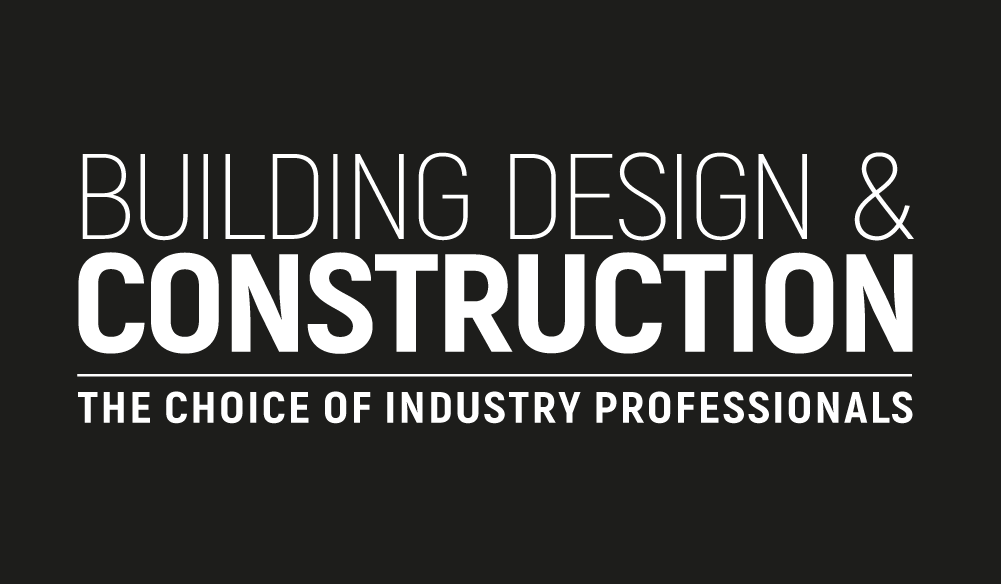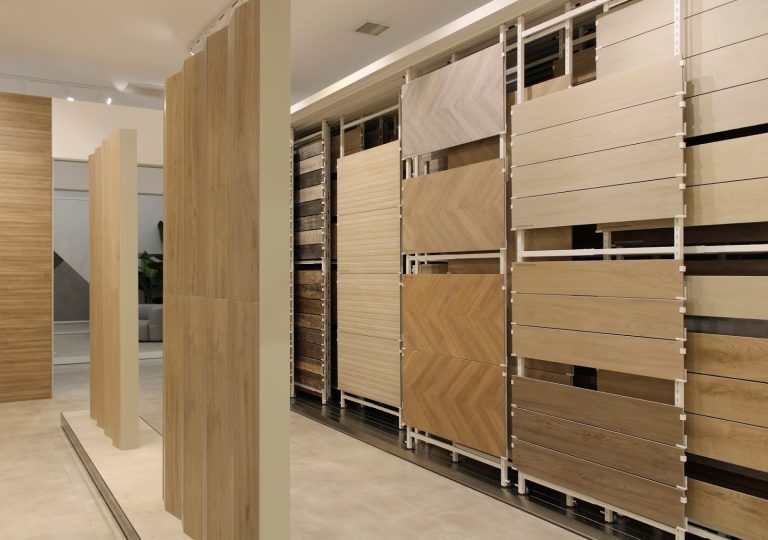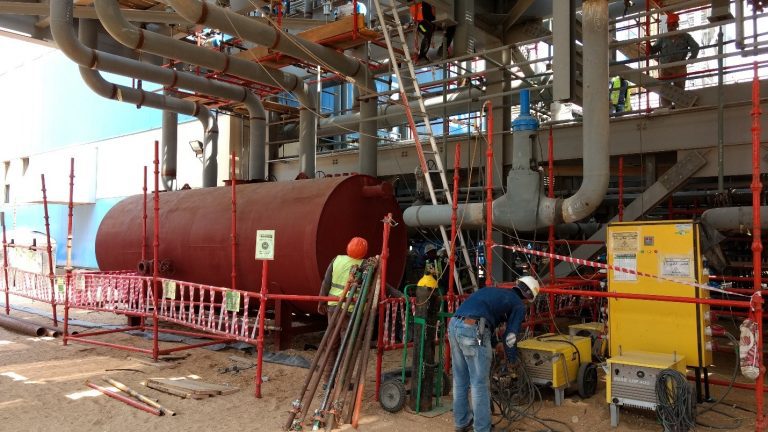In the competitive world of tile, bathroom, and building materials distribution, standing out is not just about having high-quality products; it’s about presenting them in a way that captivates your audience and drives sales. Exhibiting products is one thing; knowing how to exhibit them is another entirely. The difference between an exhibition that generates sales and one that doesn’t often lies in the quality of the presentation. At INSCA, we specialize in crafting innovative tiles display stand solutions that highlight the best of your collections, ensuring they make a lasting impression on your customers. Our mission is simple: to help distributors, manufacturers, and opinion leaders in the industry grow by showing their best. As our claim states, “There’s only one way to grow: show your best.” With over 45 years of experience, INSCA has become a trusted partner for businesses worldwide, helping them create impactful tile showroom display setups that resonate with customers and drive results. First Impressions Matter: The Power of 10 Seconds Did you know that customers form an opinion about your business in just 10 seconds after entering your showroom? In this brief window, they decide whether your space aligns with their needs and expectations. This is why it’s crucial to make every second count. A well-designed tiles display stand can transform a fleeting glance into a meaningful interaction, encouraging customers to explore further and engage with your products. At INSCA, we understand the importance of first impressions. Our tile showroom display solutions are designed not only to showcase your products effectively but also to create immersive experiences that resonate emotionally with visitors. From modular shelving units to interactive displays, we ensure that your showroom communicates professionalism, innovation, and quality from the moment someone walks in. Why Trust INSCA for Your Display Solutions? With over four decades of expertise, INSCA has earned a reputation as a leader in designing and manufacturing display solutions for tiles, bathroom products, and building materials. Here’s what sets us apart: 1. Over 45 Years of Experience Our team of 200 professionals, including architects, interior designers, engineers, carpenters, painters, and assemblers, works collaboratively to bring your vision to life. Each project is tailored to meet the unique needs of your business, ensuring that your showroom stands out in a crowded market. 2. Comprehensive Services Under One Roof From conceptualization and design to technical development, prototyping, manufacturing, logistics, and assembly, we handle every step of the process. Our 30,000 m² manufacturing plant and logistics center in Spain ensures precision, quality, and efficiency at scale. 3. Worldwide Reach and Extensive Catalog We export globally and offer the world’s largest catalog of display stands, with over 1,500 different references tailored to all formats and manufacturers. Whether you’re showcasing tiles, bathroom fixtures, or other building materials, we have a solution that fits your needs. 4. Innovative Design and Strategic Layouts Our Conceptualization and Design Department focuses on enhancing customer experiences while optimizing space utilization. We create distinctive spaces that tell your brand’s story and engage visitors emotionally. Meanwhile, our Technical Development and Prototyping Department leverages advanced technology, value engineering, and continuous innovation to deliver robust, user-friendly systems. 5. Sustainability and Quality Assurance At INSCA, sustainability is at the core of everything we do. We collaborate with suppliers who share our commitment to environmentally friendly practices. From processing wood and metal to using high-precision welding techniques, we ensure durability, functionality, and eco-consciousness in every product. Transforming Exhibitions into Sales Opportunities Exhibiting building materials requires more than just placing products on shelves or walls. It demands creativity, strategy, and expertise to transform your showroom into a dynamic sales tool. Here’s how INSCA helps you achieve this: 1. Highlighting Small Formats with Impact Small-format tiles are versatile, ideal for compact spaces, and perfect for creating unique patterns and designs. However, presenting them effectively can be challenging. INSCA’s tiles display stands solutions, such as the Ceramoteca UP series, which features low-height shelving with anti-slip surfaces and integrated seating areas to facilitate interaction with clients. 2. Interactive Displays That Engage Customers Engagement is key to converting interest into sales. Our bank workstations, such as those from the UP! and Minimal series, combine functionality with aesthetics, enabling customers to explore color combinations, textures, and finishes firsthand. These modular systems adapt seamlessly to any showroom layout and provide ample storage for samples. 3. Maximizing Space Without Compromising Style Space is often limited in showrooms, but INSCA’s tile display stand solutions are designed to maximize capacity without sacrificing elegance. Our Milan Wall system, for example, transforms walls into canvases for creative compositions, complete with accessories like smooth shelves, slotted panels, and even built-in tables for hands-on exploration. 4. Creating Immersive Experiences Today’s consumers seek more than just products; they crave experiences. INSCA helps you create immersive environments through thematic scenography, custom architectural elements, and integrated lighting strategies. By simulating real-life settings such as living rooms, kitchens, or terraces, we enable customers to envision how your materials will look in their own homes. For instance, our tiles showroom display designs incorporate digital tools like interactive screens and augmented reality, allowing customers to visualize layouts and finishes in real-time. These innovations amplify the perception of your products and strengthen the emotional connection between your brand and its audience. 5. Leveraging Technology for Enhanced Presentations Digital tools play a vital role in modern exhibitions. From interactive screens and 3D simulations to smart lighting and augmented reality, INSCA incorporates cutting-edge technologies to enrich the customer journey. These features not only enhance the aesthetic appeal of your showroom but also streamline decision-making for your clients. Show Your Best with INSCA Your showroom is more than just a space, it’s a powerful sales tool. By investing in high-quality tile display stands and innovative tile showroom display solutions, you can transform your exhibition into a captivating experience that resonates with customers. Whether you’re looking to revamp your showroom, introduce new collections, or host exclusive events, INSCA provides the expertise and resources to elevate your exhibition to the next level. Let us














